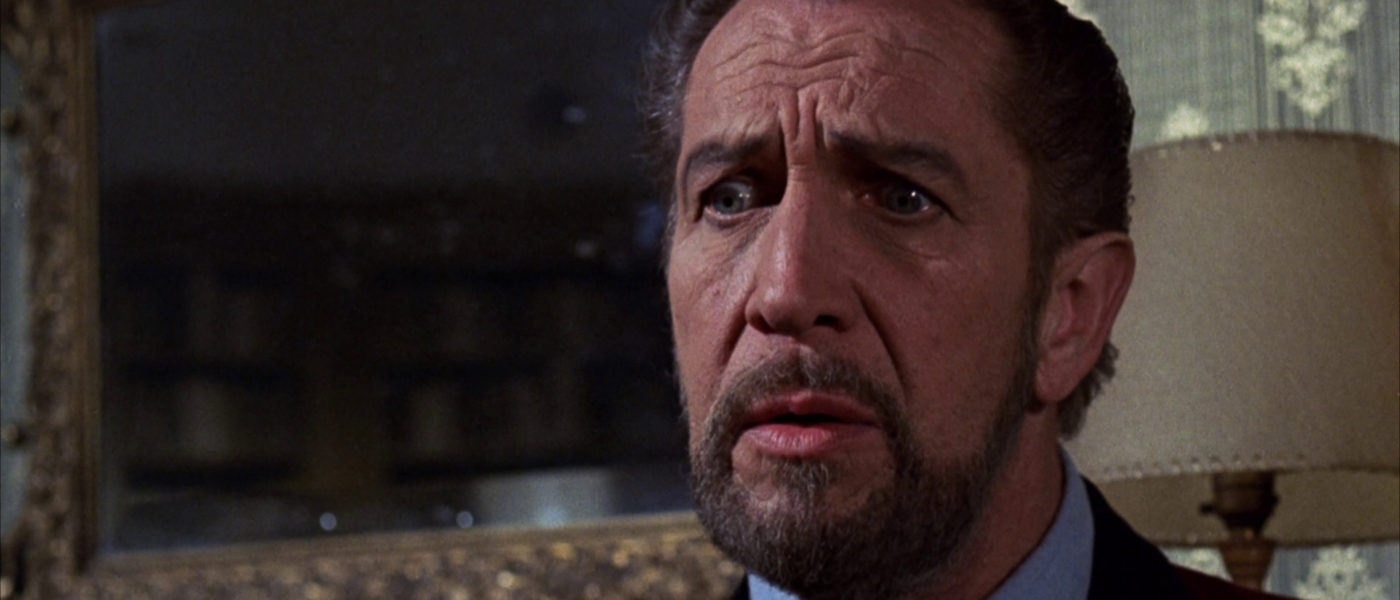KL Debuts Fun Trio Of Near-horror, Off-Halloween Fare, Appropriately, In Late April
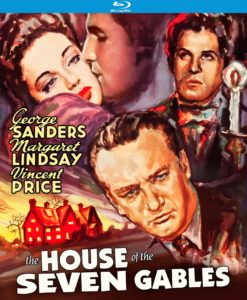
THE HOUSE OF THE SEVEN GABLES (1940)/DIRECTED BY JOE MAY

THE STRANGE DOOR (1951)/DIRECTED BY JOSEPH PEVNEY

SCREAM AND SCREAM AGAIN (1970)/DIRECTED BY GORDON HESSLER
STREET DATES: APRIL 23RD, 2019/KINO LORBER STUDIO CLASSICS
For those of us who tend to obsessively organize our classic moviewatching by the calendar, reserving the patriotic Irish-American biopic Yankee Doodle Dandy (1942) for St. Patrick’s Day or the yearly-shifting Spring Sunday for the Irving Berlin musical Easter Parade (1948), the entire month of October is obviously the best time to eye-gorge on horror flicks. (An annual genre tradition this reviewer tends to indulge himself, it might be noted.) We undoubtedly oddball old movie fans of the morbidly atmospheric, who overwhelmingly tend to seasonal compulsion in fright film-viewing habits, may find scant opportunity or reasonable excuse, however, to satisfy our always latent cinematic lust for the strange and unusual outside of the Halloween month, but fortunately Kino Lorber Studio Classics has embalmed a few almost horror titles on Blu-ray to quell our late April jones for the movie macabre.
Spanning thirty years, across two continents, and including four (possibly five) icons of the genre, 1940’s The House of the Seven Gables, co-starring Vincent Price, 1951’s The Strange Door, starring Charles Laughton and featuring Boris Karloff, and 1970’s Scream and Scream Again, top-billing though fleetingly featuring (to varying degrees of, um, fleet) Vincent Price (again), Christopher Lee, and Peter Cushing, these tales of terror broadly encompass gothic literary adaptation, dark period adventure, and, finally, an indescribable blend of science fiction, political satire, and medical transgression, respectively, for three wildly different thrillers that individually skirt the boundaries of the uncanny — without any becoming strict horror films per se. As such, a perfect Spring triple-bill that may sate one’s appetite for near-horror without intellectually infringing on the supernaturally imaginative properties rightly belonging to the month of October.
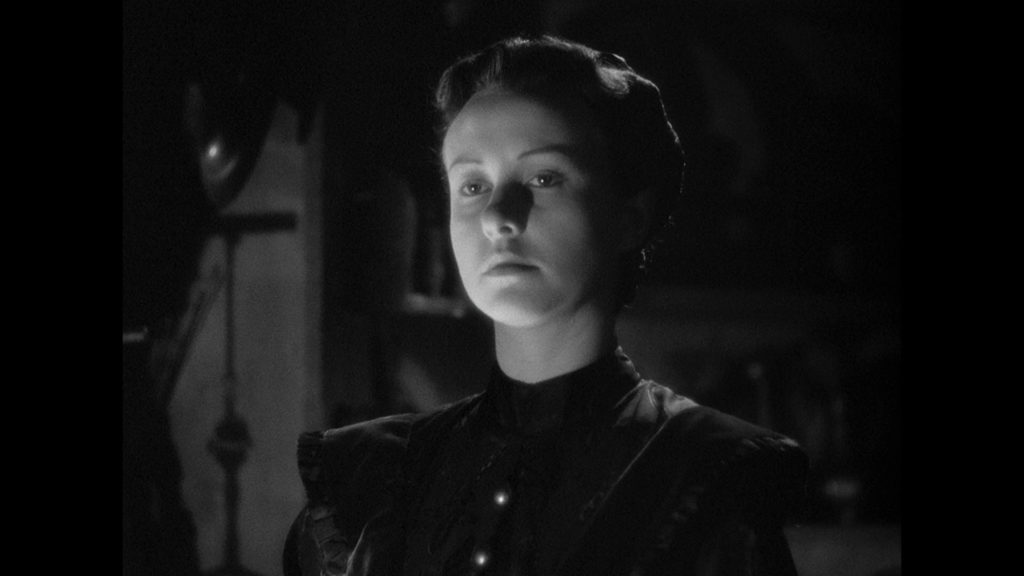
The House of the Seven Gables liberally adapts the 1851 Nathaniel Hawthorne literary classic for the sound stages of Universal Studios during its late ‘30s/early ‘40s second-run of classic horror movies. Reuniting much of the production team from the studio’s 1940 sequel The Invisible Man Returns, including director Joe May, cameraman Milton Krasner, and co-stars Vincent Price, Nan Grey, and Cecil Kellaway, they are here joined by caddish George Sanders, versatile Margaret Lindsay, stalwart Dick Foran, along with many other adjective-deserving performers, faces, and presences from Universal’s horror heyday. Screenwriter Lester Cole’s reconstituted rewrite of Hawthorne’s murkier family legends, curses, and hidden secrets considerably streamlines two centuries of the Puritan Pyncheons and their seven-gabled New England household.
Gothic atmosphere and early-mid nineteenth century setting aside, the historical theatrics are fairly straightforward but enlivened by the brotherly rivalry between Sanders’s hypocritical Jaffrey and Price’s wronged Clifford, with three decades of thwarted romance between the latter and Margaret Lindsay’s astonishing Hepzibah providing a genuine emotional core to the Pyncheon family drama. Colored by the presence of Vincent Price, perhaps — whose later, inescapable association with the horror genre was at this point in his career mere flirtation — The House of the Seven Gables nevertheless does appear darker and sinister for its overarching spirit of generational decay. Clifford and Hepzibah may be maritally united in the film’s epilogue, without the latter having even to change her family name (siblings in the original story, they are re-cast as kissing cousins here), but the optimistically-intended time-lapse hallucination of Cecil Kellaway’s kindly family solicitor — in which 30 years of old-age makeup screen-wipes away to reveal the elderly couples’ formerly bright and youthful faces — strikes a curiously spooky death knell for Clifford and Hepzibah’s now limited time together. Film’s end certainly shows the autumnal lovers carriage-riding happily free from the title house, and thus the oppressive legacy of the Pyncheons, but at the considerable cost of their youth and imminently-approaching mortality.
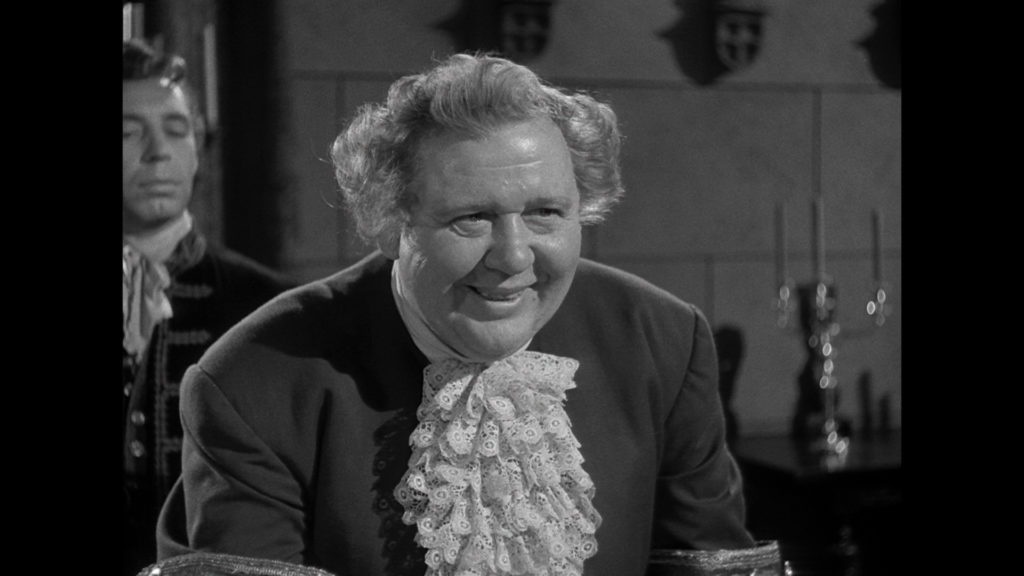
Universal’s (abbreviated) third-run of postwar horror movies, when the studio had since been re-cast as Universal-International, yielded 1951’s The Strange Door, adapting Robert Louis Stevenson’s 1878 historical melodrama “The Sire de Malatroit’s Door” for a scenery-chewing Charles Laughton and a vaguely-anesthetized Boris Karloff. Master and servant, respectively, with the former’s campy eyerolls aesthetically balancing the latter’s heavy-browed and downcast, empty stare, this dungeons-and-ballrooms thriller updates the medieval adventure milieu of Stevenson’s original tale, here set squarely in the puffs-and-frills eighteenth century, for 81 painless minutes of skulking up and down castle stairs.
The Strange Door is certainly Laughton’s show all the way, even giving the unrestrained actor the opportunity to reprise his dinner table gluttony scene of teeth-ripping into hunks of meat and hurling the bones to the dogs from 1933’s The Private Life of Henry VIII, but — beyond that more literal scenery chewing — a wheeled death mill, iron-implemented torture devices, and crushing walls of a closing prison cell may linger in the viewing memory well past the obligatory romance between second leads (Richard Stapley, Sally Forrest), which has just now slipped past this reviewer’s powers of adequately descriptive recall. (Something to do with the Sire’s posthumous revenge on his late brother marrying the also since deceased woman both loved by forcibly marrying the brother and former lover’s only daughter, the Sire’s niece, to a ne’er-do-well found in a tavern; the latter who, thwarting the Sire’s evil design, turns out to be a disguised lord, anyway. If you were interested.) Karloff isn’t given much to do beyond the aforementioned castle-skulking, but Laughton in hammily derailing the plot through his screen antics — most memorably, in one scene, full-body lounging across a small desktop while still managing to deliver withering bon mots — actually provides a subtextual layer of entertainment that the clichéd surface elements of the story might not have otherwise delivered.
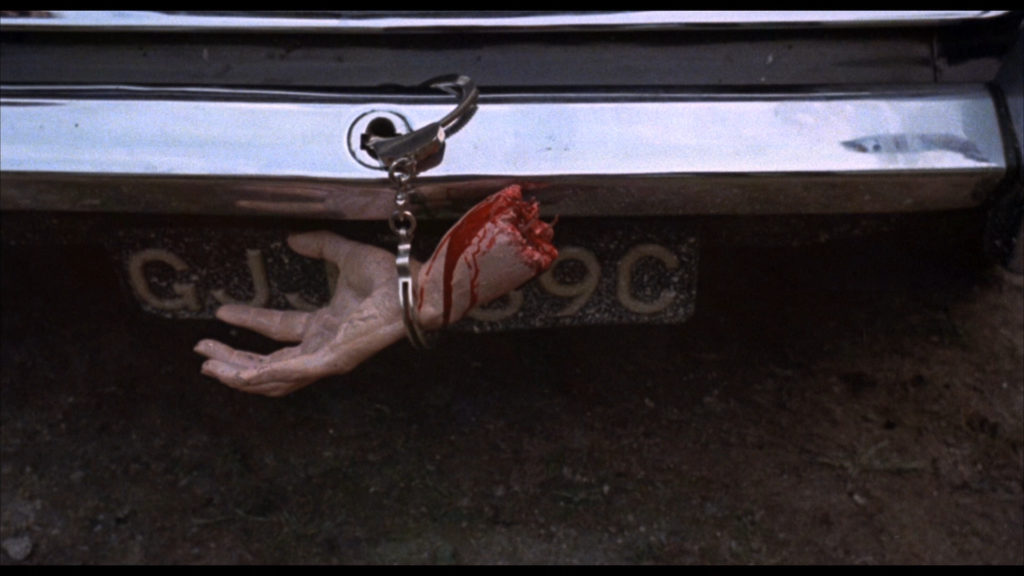
American International Pictures enters the psychedelic era in truly startling fashion with a plot that includes Orwellian dystopia, biological vampirism, a quarter-hour car chase, and, finally, a full-body plunge into a barn-vat of acid. While the above-the-title names of Vincent Price, Christopher Lee, and Peter Cushing crowd the marquee, the combined screen time of this trio of acting terror is less than a third of the film’s total running time (with Cushing’s startling appearance in a Nazi-type uniform amounting to a minute-and-a-half cameo), this calculated marketing ploy actually adds to the film’s nearly two-hour suspense of confusion, misdirection, and, most of all, unease. 1970’s Scream and Scream Again seems to take title-inspiration from the initial framing device of a man, shown in the opening sequence suffering from a coronary collapse during his morning run, waking up multiple times in a hospital bed with successive limbs missing. Interspersed with these grisly suggestive scenes are a working-class police inspector’s (Alfred Marks) investigation of the mysterious murders of several young women, with the blood completely drained from their bodies, and a spy-operative’s (Marshall Jones) murderous rise through the ranks of a Gestapo-like Eastern European power by, oddly, pinching the jugular veins of his victims with superhuman strength. (A method of disposal appearing like a blood-flowing Vulcan neckhold.)
Director Gordon Hessler (The Oblong Box) confronts the cultural chaos of the period in a film whose impact obviously defies description, but, seen in the right mood, might bear artistic witness to the precise filmed moment when the Swinging Sixties gave way to the more Psychotic Seventies. (And that moment is possibly when a nightclub stalker frees himself from stainless steel handcuffs locked to the rear bumper of a car by grusomely severing his own hand.) One may not immediately understand, say, Christopher Lee’s role as a behind-the-scenes power broker, or his seemingly telepathic(?) climactic confrontation with Vincent Price’s mad plastic surgeon — both apparently surgically-enhanced superhumans bent on world domination — but the combined fear and resignation with which the latter lowers himself into a disposal vat of acid, along with the former’s chilling announcement of the imminent arrival of “Chaos!”, may prove resonant beyond any measure of logical sense.
…
Our nerve-ends satisfyingly tingled by this outré mélange of near-horror, a more purposeful perusal of Kino Lorber’s special features will be in order. All films are beautifully transferred to Blu-ray, with high-definition appearing to great advantage over three successive decades of chiaroscuro Gothic mansion interiors, stately castle views of medieval-enough-looking studio architecture, and disorienting color-schemes of an off-London and proto-disco dancefloor. (The latter thankfully available in both its 114-minute American release and 118-minute British version. The latter-latter’s X-equivalent censor’s certificate alone making the release a must for the truly discerning fan.)
Descending further into our late April movie madness, audio commentators Troy Howarth (The House of the Seven Gables), Tom Weaver (The Strange Door; assisted by musical expert David Schecter and theatrical distribution researcher Dr. Robert J. Kiss), and Tim Lucas (Scream and Scream Again) make each home video purchase more than worthy with historical, thematic, and production deep-dives into each individual tale of terror. Once again, Kino Lorber Studio Classics give the sometimes overlooked, often neglected avenues of genre film history their admirably generous due.
The images used in this review are credited to DVDBeaver. Thanks to Kino Lorber for providing Blu-ray copies of the films for review.


